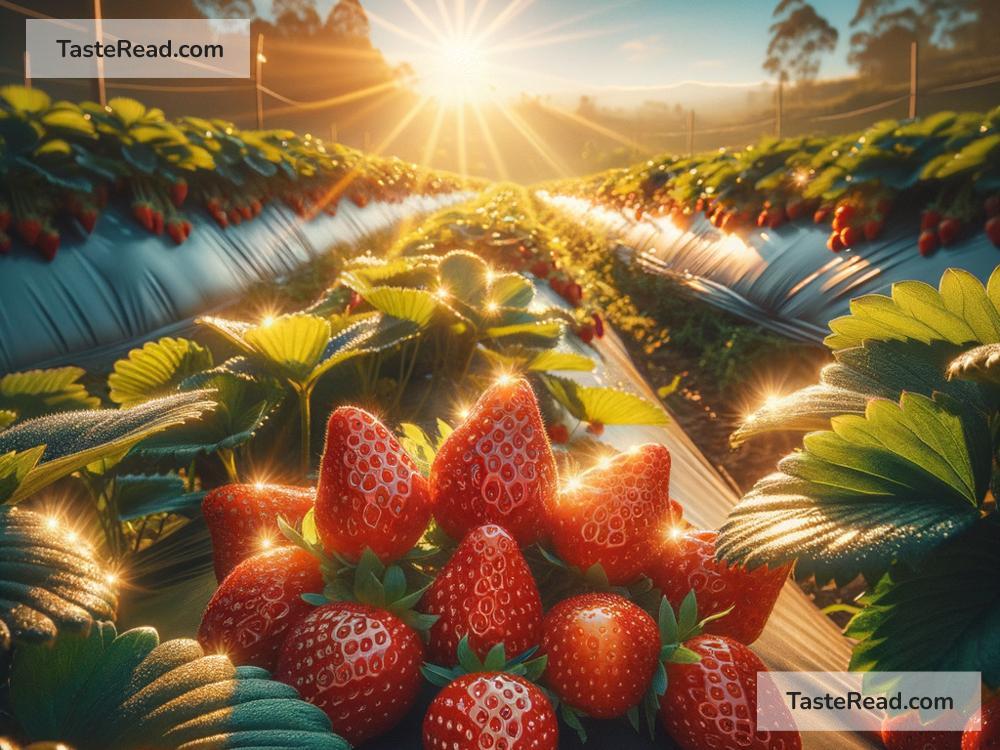The Role of Sunlight in Shaping the Sweetness of Strawberries
Strawberries are one of the most loved fruits in the world. Whether eaten fresh, dipped in chocolate, or added to desserts, their sweet and juicy flavor makes them a favorite for everyone. But have you ever wondered what makes strawberries taste so sweet? One big secret lies in something that surrounds us every day: sunlight. Sunlight plays an essential role in how strawberries grow, how sweet they become, and even how healthy they are for you. Let’s take a closer look at how sunlight shapes the sweetness of strawberries.
Why Sunlight Matters to Plants
Sunlight is not just good for warming us up or brightening our day—it’s actually the source of energy for plants. Through a process called photosynthesis, plants use sunlight to convert water, carbon dioxide, and minerals into food. This food helps them grow and thrive. Without enough sunlight, plants can’t make the energy they need, and they struggle to grow properly.
Strawberry plants are no exception. They rely on sunlight to fuel their growth, produce flowers, and eventually develop their sweet, red berries. The more sunlight they receive, the more energy they can generate, which directly impacts how sweet their fruit turns out.
How Sunlight Affects Strawberry Sweetness
Strawberries get their sweetness from natural sugars. These sugars are created during photosynthesis, the process where the plant turns sunlight into energy. When strawberry plants receive plenty of sunlight, they produce more sugars, leading to sweeter berries. On the other hand, if a strawberry plant doesn’t get enough sunlight, the berries may turn out bland or less flavorful.
Sunlight also affects other components of a strawberry, giving it depth of flavor. Along with sugar, strawberries contain natural acids that balance their taste. The perfect strawberry isn’t just sweet—it has a little tanginess too. Sunlight helps regulate this balance, so berries grown under optimal sunlight conditions have just the right mix of sweetness and acidity.
The Importance of Timing and Season
Strawberries grow best in areas with long, sunny days and cooler nights. This is why you’ll often see strawberries thriving in spring and early summer. During these seasons, the sun isn’t too harsh, but the days are long enough for the plants to soak up lots of sunlight. This is the perfect condition for producing sweet fruit.
Farmers and gardeners often pay close attention to the length of the growing season. If strawberries ripen too quickly, they might not have enough time to absorb sunlight and develop their sugars. On the flip side, if the weather is cloudy for too many days or the growing season is too short, the strawberries might not reach their full sweetness potential.
Sunlight and Strawberry Farming
Farmers who grow strawberries know how important sunlight is, and they use it to their advantage. They carefully choose locations that get plenty of sun throughout the growing season. In colder regions where sunlight is limited, some farmers use greenhouses or other methods to control how much light their strawberries receive. This helps ensure that the berries turn out sweet and flavorful.
You might have even noticed a difference between strawberries that are grown locally and those shipped from faraway places. Local strawberries, harvested during their peak season, often taste sweeter because they’ve been grown under better sunlight conditions specific to the region.
Can Too Much Sunlight Be Harmful?
While strawberries love sunlight, too much of it can sometimes be harmful. Extremely hot or intense sunlight can dry out the plants and cause the berries to become overly ripe or lose their vibrant color. Heatwaves, for example, can stress strawberry plants, affecting their growth and the taste of the fruit. This is why farmers often water their fields carefully during sunny days, ensuring the plants stay healthy without being overwhelmed by the heat.
How You Can Enjoy the Best Strawberries
If you want the sweetest strawberries, try to enjoy them when they’re in season. Spring and early summer strawberries usually taste better because they’ve had plenty of sunlight to develop their sweetness. If you grow strawberries at home, plant them in a spot where they can get full sun for at least 6–8 hours a day. Monitor the soil, water your plants consistently, and let the sunlight do the rest of the work.
Beyond growing strawberries, sunlight also affects how they taste after they’re picked! Fresh, ripe strawberries exposed to sunlight for just a few hours can soften and become sweeter. However, be careful not to leave them outside for too long, as this can make them spoil faster.
Conclusion
Sunlight is like a secret ingredient that makes strawberries sweet and delicious. It helps plants create the natural sugars and acids that give strawberries their incredible flavor. Without sunlight, strawberries just wouldn’t taste the same. That’s why the time of year, the growing location, and the amount of sunlight all play important roles in shaping the sweetness of your strawberries.
Next time you bite into a sweet, juicy strawberry, take a moment to appreciate the sunlight that played its part in creating this tasty treat. Whether you’re growing strawberries in your garden or buying them at the farmer’s market, the sun might just be one of the biggest reasons they’re so irresistible!


